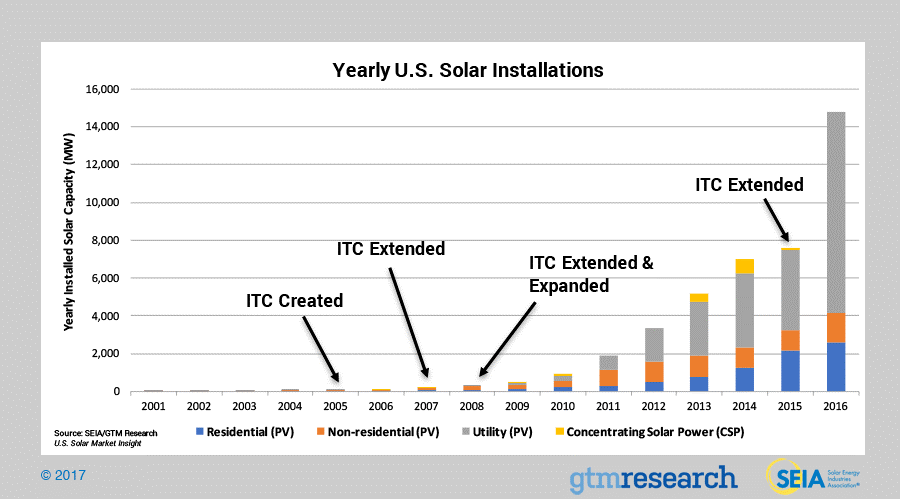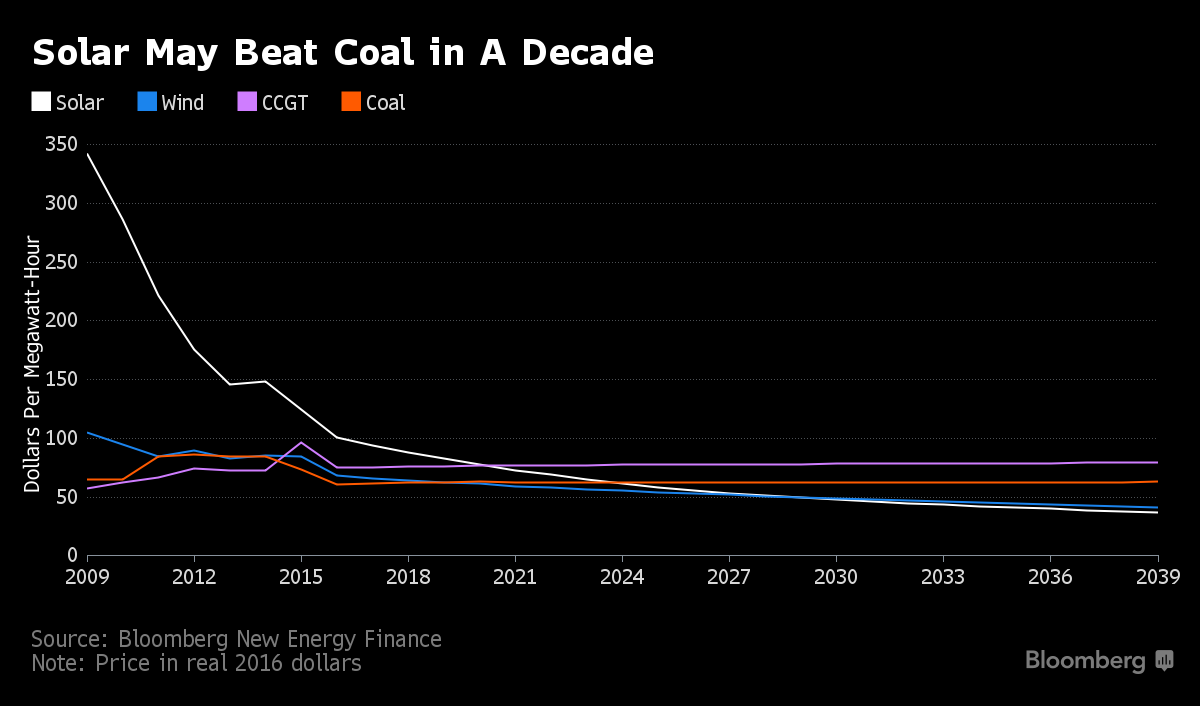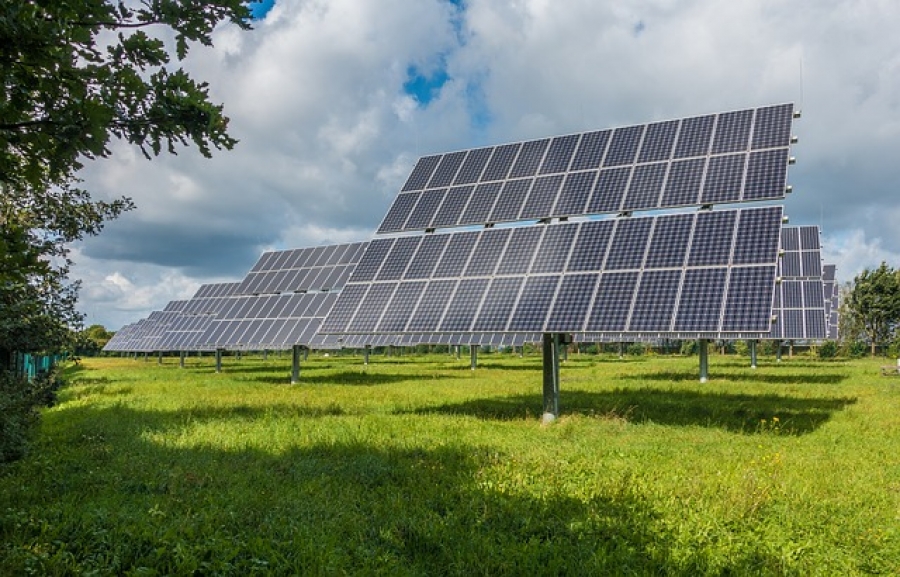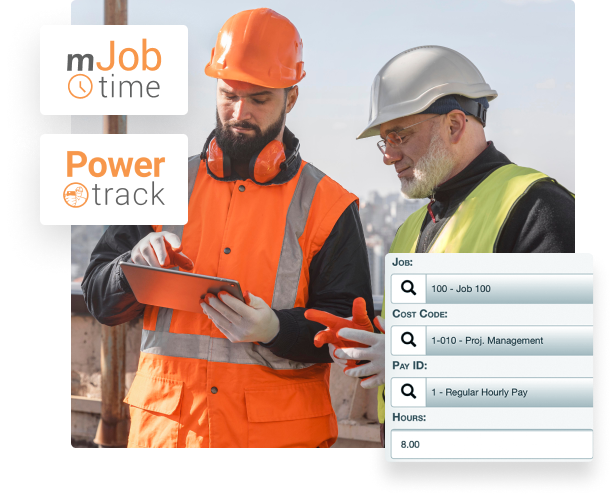Solar Power
As mentioned in Part 1 of this series, construction spending has been on the rise for several years now, but there are many factors that could slow this down in the future.
Among them are rising interest rates, lack of political will for governmental spending on infrastructure, the age of the current bull market, and a tight labor pool. Given this environment, this post explores the new opportunities arising from the field of renewable energy. Specifically, we will look into the area of solar power.
Although the first working solar cell dates back to 1883, solar power did not gain any momentum until 1999 when Germany instituted a “100,000 Solar Roofs” program. Within 6 years, they had created 300 megawatts (MW) of photovoltaic (PV) power, but it was not until the 21st century when, with various federal, state, and local governmental tax credits and rebates made available, solar power became a popular option in the US.

According to Bloomberg New Energy Finance, solar prices throughout the supply chain have fallen 62% since 2009, and by 2025, solar could become cheaper than coal.

Supporting this claim, the International Renewable Energy Agency sees a further drop in solar costs by 2025 of 43% – 65%.
Obstacles of Solar While the price of solar power has been dropping quickly and substantially, and more dramatic price declines are expected in the future, there are other concerns to consider.
The average U.S. consumer pays about 12 cents per kilowatt-hour for electricity, including the cost of generating power, transmitting it to our homes, and the business cost. To be competitive, the cost of generating renewable energy has to be in the range of 2 to 4 cents per kilowatt-hour. But the wind doesn’t blow nor does the sun shine 24 hours a day. How is power generated during these periods? We Americans are quite spoiled when it comes to feeling comfortable and are not really concerned about where the power comes from, just that we have it when we want it. Having power accessible to us 24 hours a day means that there must be another source available to us when renewable energy is not. Most people think that having solar power on their roofs will give them power when the grid goes down. This is actually not true in most cases. Because of net metering, all power generated by the solar panels goes directly into the grid, offsetting your actual consumption. When you actually use power, it comes from the grid, so any outages will leave your home with no power.
Backup and intermittent services for large-scale power have traditionally been provided by peaking power plants also known as “peaker” plants. They generally provide power during peak usage when demand is the greatest. These plants are generally gas turbines burning natural gas. Since they only run occasionally, peaker plants charge a much higher price per kilowatt hour.
Today, new residential battery storage systems such as the Tesla PowerWall are providing not only backup services, but also allow their users to use the battery during high-cost peak hours and use the grid when demand subsides. On a commercial basis, utility-scale battery storage is exploding. A giant natural gas leak at a peaker plant near Aliso Canyon in Southern California left energy regulators in a particularly sticky situation. Their solution? 19,000 battery modules wired together in racks. Since then, many other utility scale projects have been completed including Tesla’s 100 MW battery farm in southern Australia. As storage production increases, battery storage costs will decrease, leading to even cheaper, safer, and cleaner systems.
The solar power industry has seen tremendous growth in the last 10 years and the prospects for the future are very promising. Costs continue to fall and, apart from an administration supporting fossil fuels, we should continue to see significant growth. It might be worth your while to check out the possibilities available in this rapidly growing field.
If you are needing to upgrade your labor tracking system in the field, please check us out. We specialize in mobile time tracking for the construction industry, but we have customers in many other industries. Our professional sales staff will discuss your situation and help you find the right solution. Please call us at 800-387-1109, email us at [email protected], or request a demo at mjobtime.com/request-a-demo.







